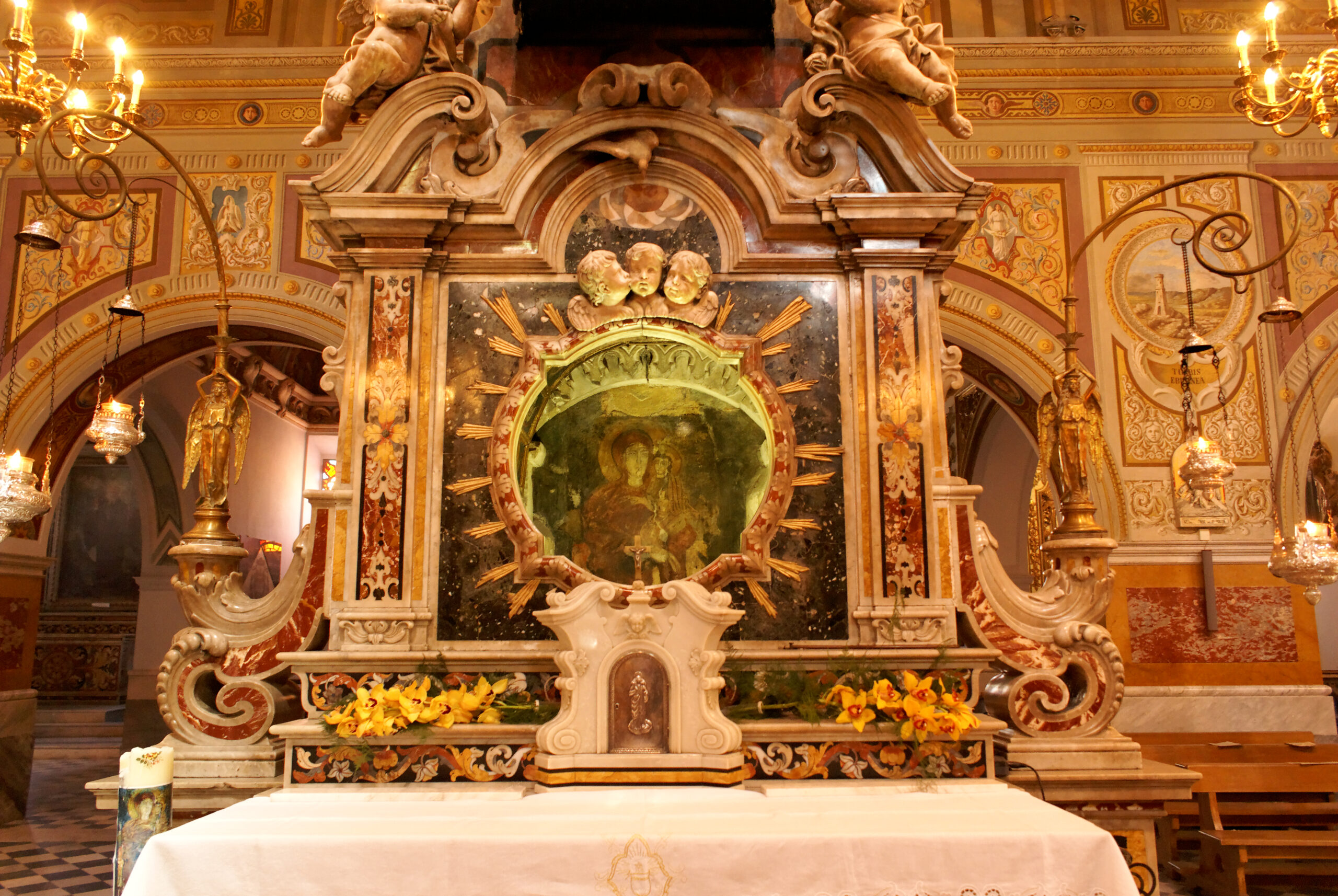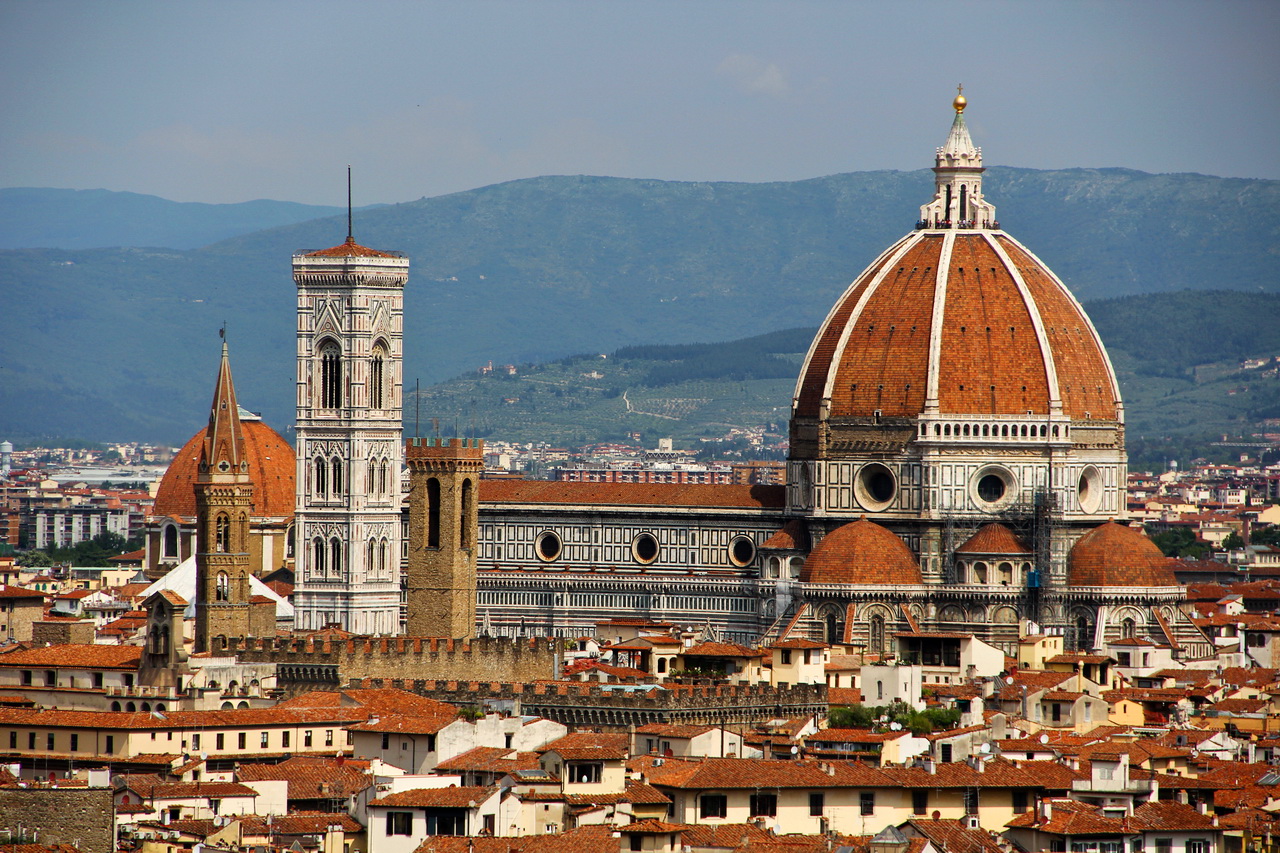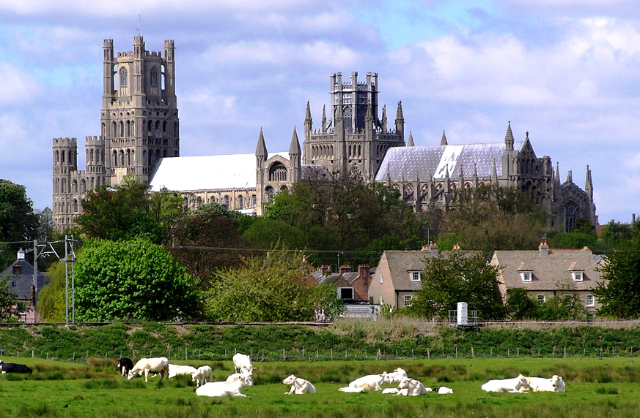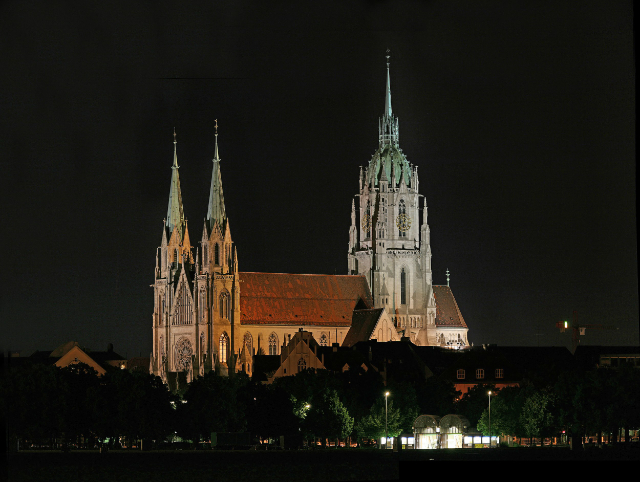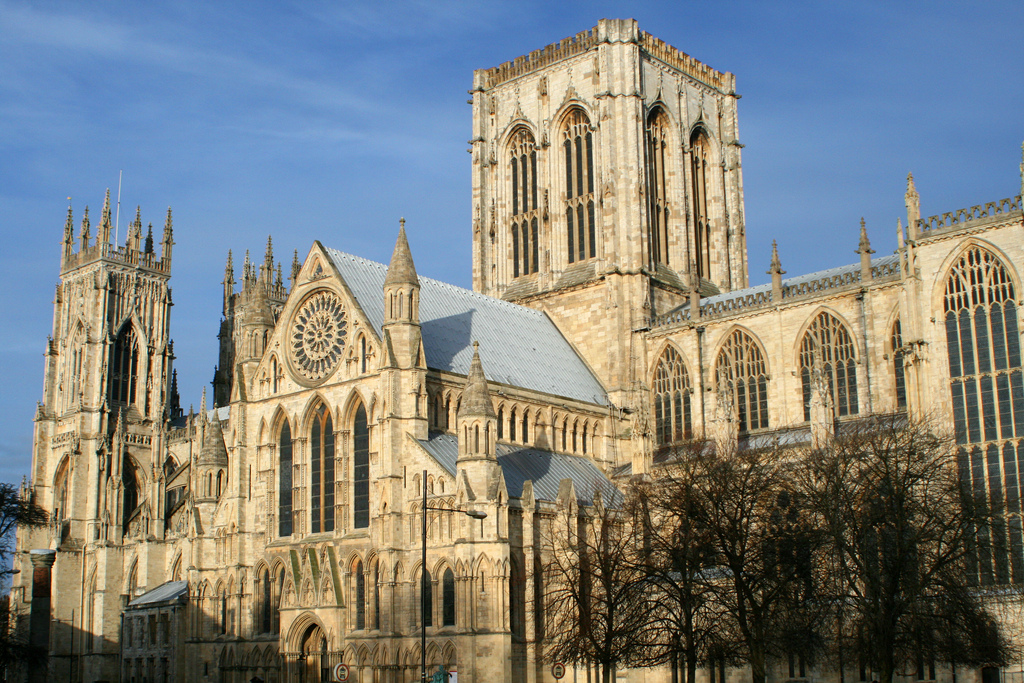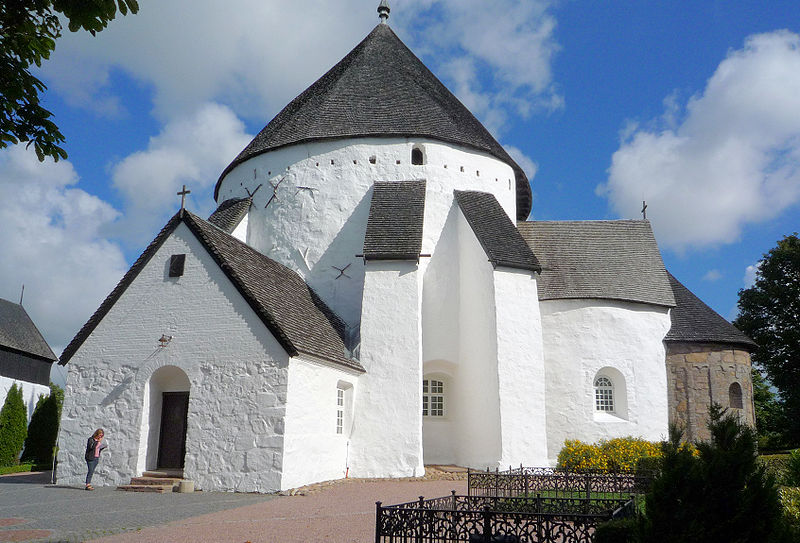The Cathedral of Our Lady Achiropita of Rossano dates back to the 9th-12th centuries, although it has undergone numerous remodeling over time. Built on an earlier construction from the Byzantine era, the Cathedral preserves an icon of the Achiropita Madonna inside, which is located in a niche on the right side of the nave.
The Achiropita Madonna, literally "not painted by human hand," has been venerated since the 12th century. Legends and traditions are animated around it. The first tells that the icon was found by the church’s guardian the day after a woman of extraordinary beauty surrounded by dazzling light led him away from the sacred building that was still under construction. The other, however, tells that during the construction work of the church, when it came to painting the icon to be dedicated to the Mother of God, the image executed by Byzantine artists disappeared, miraculously replaced by the Achiropita Icon.
The building consists of three naves, plus a fourth consisting of four chapels and an apsidiole. The church represents the true testimony to the history of the diocese: in it we find works and artifacts from every era that, over the centuries, were commissioned by the various bishops of the district. From the Byzantine mosaics on the altar floor, to the early 20th-century wall paintings by master Capobianco, via the fabulous marbles commissioned in the very early years of the 18th century by Bishop Adeodati, including the altar where the icon of Our Lady Achiropita is placed.
The façade, destroyed in the 1836 earthquake, was rebuilt in two stages, as was the bell tower, which is located to the left of the body of the building.
The Cathedral housed the Greek rite until 1460, when Archbishop Saraceno decreed the transition to the Latin rite.
